Dragon Age’s Past, Present, and Future: Thoughts on Inquisition’s DLC
By Darth_Navster 26 Comments
We’re now over a decade into downloadable content (DLC) becoming mainstream in gaming. What started off as a poor value with Oblivion’s horse armor has blossomed into a space where developers can take risks and tinker with new ideas within the context of an already successful game. One of my favorite aspects of this is that it gives me an excuse to revisit titles that I’ve enjoyed in the past. This is especially true for RPGs, where I lack the time for another full playthrough but am willing to play a few more hours of content. Since Dragon Age: Inquisition’s DLCs were put on sale recently, I decided to fire up my old save and see what BioWare had done with the game since its release in 2014. With the three DLC packs, BioWare comments on Dragon Age as a whole by examining the franchise’s past, present, and future. Here are my thoughts on them.
The Past: The Descent
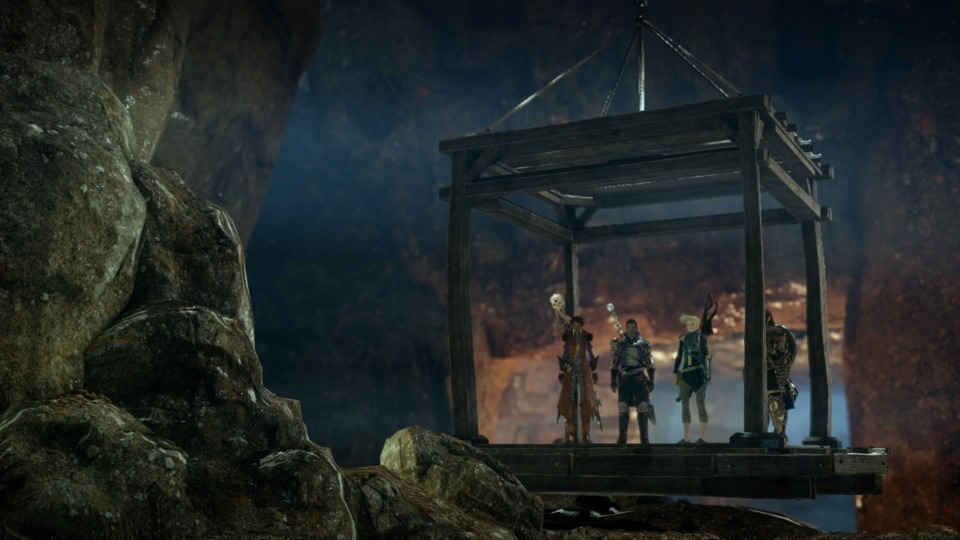
In many ways, any new Dragon Age content must grapple with the long shadow cast by Dragon Age: Origins. The first game in the series, Origins not only introduced us to the wonderful fantasy universe that is Thedas, but it also tied the franchise to the long-established framework of 90s PC RPGs like Baldur’s Gate and Planescape: Torment. From the mage-fighter-rogue paradigm to the menu based dialog trees, Origins did little to advance the Western RPG. When the series went in a more action-oriented, Mass Effect inspired direction in Dragon Age II, the game was summarily dismissed for (among other sins) not feeling enough like its predecessor. Even Inquisition, a game that attempts to right many of Dragon Age II’s perceived wrongs, seems to be missing the specific rhythms and charms of its progenitor.
With The Descent, BioWare has seen fit to finally give us a story module that feels very much like Origins, for all its virtues and faults. The setup involves mysterious earthquakes in the Deep Roads that threatens the supply of lyrium of which the economy of Thedas relies. The Inquisitor intends to stop these earthquakes with the help of Legion of the Dead soldier Renn and Orzammar Shaper Valta. Renn proves to be the more memorable of the companions, as he is voiced with the distinct raspiness of David Hayter. Hearing him tell tales of his previous adventures never got old, even if I didn’t have much interest in the plot itself.
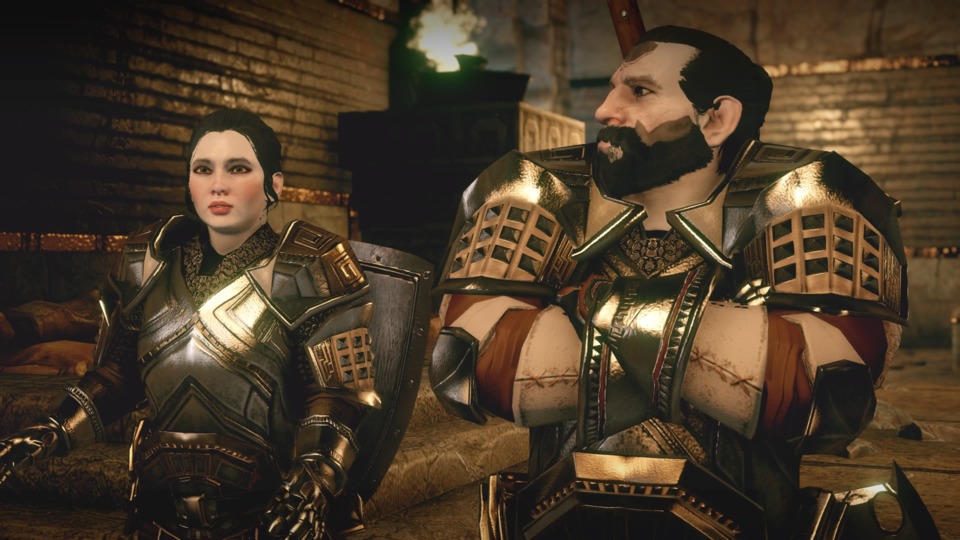
As the Deep Roads are in fact roads, or more accurately winding pathways, The Descent feels more constrained than the open environments typical of Inquisition. There’s typically only one way to proceed, and barring the inane collecting of gears to unlock optional rooms, there isn’t a whole lot of side content to experience. The straightforward structure works well, and makes the game feel much more like Origins than base-Inquisition did. You’ll be focused on getting through some tough combat encounters that necessitate pausing and strategizing, and you’ll be showered with loot when you win. The combat and linearity are great in that they kept me from getting bogged down in the busywork that plagued the main campaign. However, the excess of loot made for annoying inventory management, especially when most of what I had already equipped was far superior than the enemy drops. Inquisition’s lack of a minimap also proved to be an annoyance, as I frequently lost track of the way forward after scrapping with enemies, and pausing every five minutes to consult the map proved to be a momentum killer.
Ultimately, The Descent celebrates Dragon Age: Origins by embracing its strengths and weaknesses. The focus on a singular objective with tight combat encounters along the way gives the DLC a propulsive force that made Origins so beloved. However, by getting bogged down in far too much inventory management with useless loot, it also reminds us how Origins was often beholden to outdated RPG tropes that detracted from its good qualities. Still, it was refreshing to head underground again and pick away at the remnants of an ancient dwarven civilization. With some tweaks to the interface and mechanics, I could certainly see a future Dragon Age game taking on this throwback style to great effect.
The Present: Jaws of Hakkon
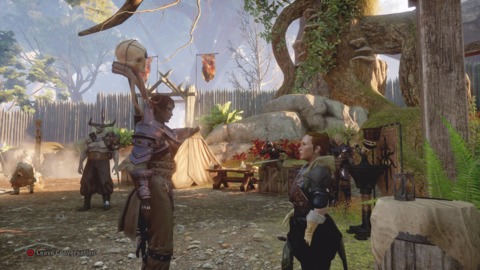
Early on in Inquisition’s story, the titular organization is formed with the player character at its helm. It’s made abundantly clear that an inquisition is called upon only in times of crisis to bring the world back in order, with the current incarnation being only the second one ever established. Jaws of Hakkon attempts to lay out the history of the original inquisition, and while it tells a compelling story the DLC feels a little overstuffed by hewing too close to the base game’s design philosophy. The premise begins with a recent discovery in the Frostback Basin shedding light on the previous Inquisitor’s ultimate fate, and sparking the interest of the current inquisition to discover its past. The investigation, however, hits a snag and the player must contend with the local politics of the Avvar tribes in the area before they can achieve their original goal. The eponymous Avvar tribe, the Jaws of Hakkon, in particular proves to be a major nuisance. As the story progresses, it becomes clear that the history of the Jaws of Hakkon and their connection to the Avvar gods ties directly into the story of the previous Inquisitor.
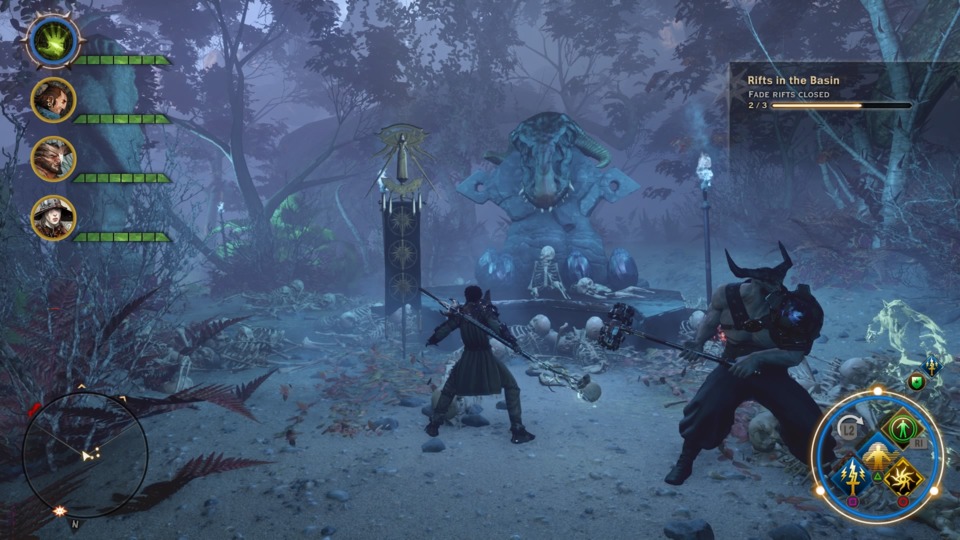
Of the three DLCs, Jaws of Hakkon most openly celebrates Inquisition for what it is, and the Frostback Basin is specifically designed to give the player more of the base game. There are fade rifts to close, shards to collect, astrariums to solve, and a ton of fetch quests to complete. Although I didn’t mind doing most of these tasks, they eventually grew repetitive and I began questioning how I ever put in 70 hours into the base game doing much of the same. It all comes down to the fundamental issue of Inquisition; that the really compelling content is diluted by the grind that the game asks you to do. Granted, previous Dragon Age games had some grind in them and were better for it, but there’s a point where it all becomes too much. In Jaws of Hakkon, the underlying story of the old Inquisitor’s final days and how it connects to the Avvar tribes is quite fascinating. But when the fascinating parts only take 2 hours of a 10 hour experience, it ultimately feels less satisfying.
In the leadup to Inquisition’s release, it was clear that BioWare was taking cues from open-ended RPGs like Skyrim to make a more expansive Dragon Age. However, by going this route, BioWare downplayed its core strengths in creating compelling characters and unmatched world-building. Those elements are still present in Inquisition, but to a much lesser extent when compared to Dragon Age II and Origins. Jaws of Hakkon reflects on that, and in doing so shows the strengths and weaknesses of BioWare’s current approach. As it’s been nearly two years since I played Inquisition, Jaws of Hakkon was a welcome return to the base game’s core gameplay. But for anyone who plays this following (or during) the main story, the repetitive grind may be too much.
The Future: Trespasser
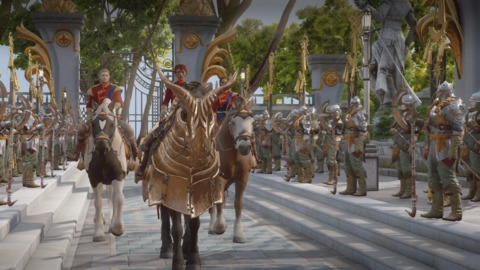
The final DLC, Trespasser, is an excellent coda to Inquisition’s story and ends up being the strongest of the trio. Two years after the defeat of Corypheus, an Exalted Council is called to determine the fate of the Inquisition. Ferelden, fearing an army that answers to no one at its borders, wishes that the organization be disbanded. Orlais, still in gratitude of the Inquisition for saving its Empress, hopes to keep it around but under some form of supervision. Finally, there’s the Chantry, now represented by Leliana as the new Divine. Leliana remains sympathetic to her old cause and will follow the lead of the Inquisitor, thereby leaving the ultimate disposition of the Inquisition in the player’s hands. Things become complicated, however, with the appearance of a dead Qunari at the Orlesian Winter Palace where the Council is being held. The Inquisitor begins an investigation that leads them to a planned Qunari invasion plot and the setup for future Dragon Age games.
While Trespasser takes some obvious cues from Mass Effect 3’s well received Citadel DLC by indulging in character interactions and a looser writing style, it pushes forward in some interesting directions. Primary among them is the focus on the geopolitical ramifications of the main game’s events. Unlike Origins where you controlled a band of adventurers, or Dragon Age II where you could only influence the city-state of Kirkwall, by Inquisition’s end you’ve built up formidable influence in the world of Thedas. The story in Trespasser emphasizes the player’s major role in shaping the future and treats the responsibility with the full weight that it deserves. Decisions made here will have ramifications for future Dragon Age games, and so gives the DLC a certain gravitas that is lacking from the other two.
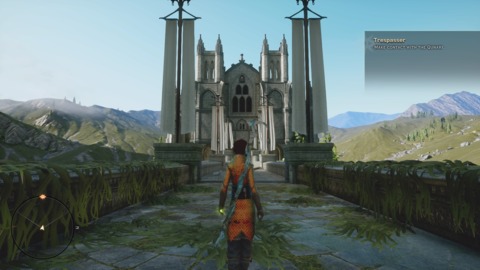
The other part of Trespasser, the Qunari conspiracy investigation, takes cues from Mass Effect 2’s Arrival DLC as it teases Dragon Age’s future. Once again, the central role of the Inquisitor in securing the Southern Continent comes to the fore, and the player must make decisions on how best to deal with the impending threat. The story also delves into the cliffhanger finale of the base game by addressing the motivations behind Solas’s betrayal and what he plans for the future, thereby raising the stakes and making any decisions all the more difficult.
Of the three DLCs, this is the most briskly paced one and demonstrates how compelling a Dragon Age game focused on story and characters can be. In addition to foreshadowing the future of the Dragon Age narrative, I hope that Trespasser also hints at a less-bloated sequel, with more bespoke quest design and less repetitive filler tasks. Trespasser ultimately succeeds in its aim to get the player excited for where the story goes next, but the ultimate payoff for the DLC won’t come until we see what the next project looks like. Considering it on its own, Trespasser is well worth checking out if only be reminded of what makes this series so great.
Final Thoughts
Despite my mixed feelings about Inquisition at its release, I’m glad that I got to revisit it. The three DLCs helped to contextualize the past, present, and future of Dragon Age, and shows that BioWare still understands the underlying principles that make the series so beloved. After playing The Descent, Jaws of Hakkon, and Trespasser I have renewed hope in the franchise and can’t wait to see where it goes next. Rest easy Inquisitor, you had a good run.